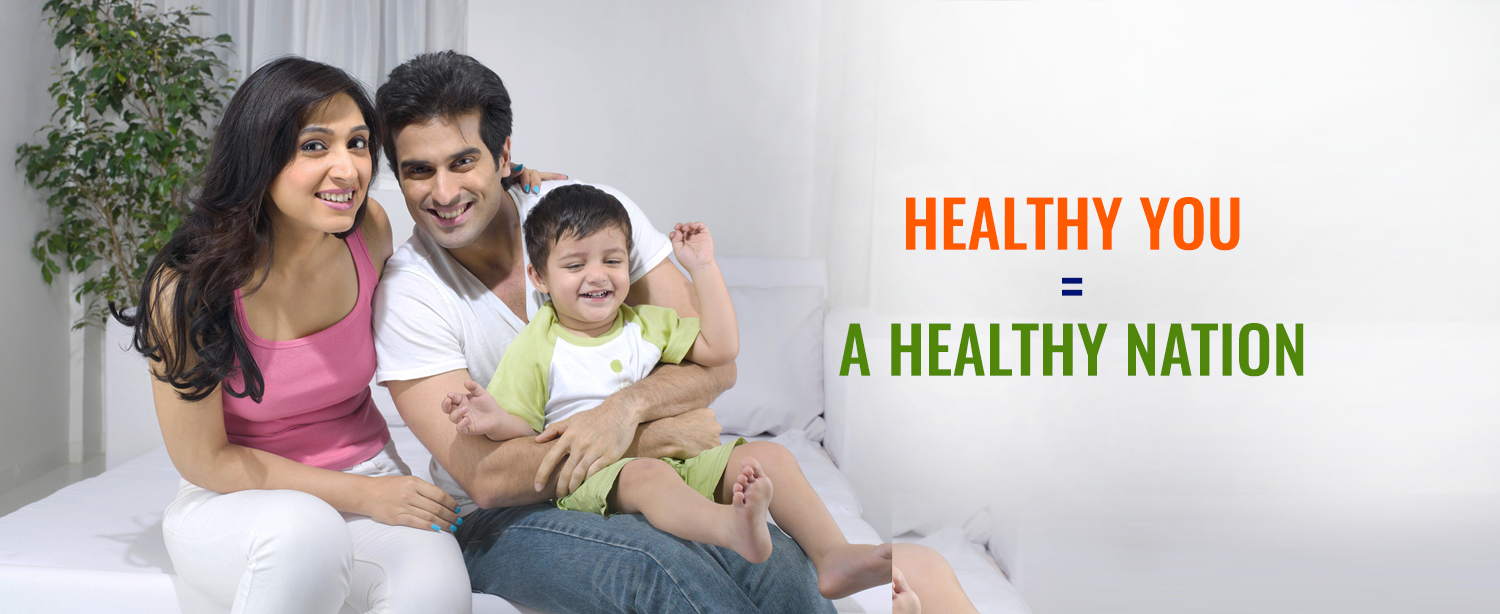Are you healthy?
Are you happy?
Is your poor health hampering your professional life?
Chronic diseases and ailments can affect your performance at work, lead to poor concentration and may add to your sick leaves. A good physical and mental health makes an important contribution to the economic progress of the nation. Healthy populations live longer, are more productive, and save more.
India stands to lose $4.58 trillion due to non-communicable diseases and mental disorders between 2012 and 2030, an amount more than double India’s annual GDP, according to a report. Out of this, cardiovascular diseases (CVDs) will account for $2.17 trillion and mental health conditions $1.03 trillion for the majority of the economic loss. This report has been released by the World Economic Forum and the Harvard School of Public Health.
Why is India unhealthy?
Unhealthy diets, physical inactivity, air pollution, harmful use of alcohol and tobacco consumption, lack of awareness is the main reason behind the development of NCDs. A non-communicable disease (NCD) is a disease that is not transmissible directly from one person to another. NCDs include most cancers, heart diseases, Parkinson’s disease, autoimmune diseases, strokes, diabetes, chronic kidney disease, osteoarthritis, osteoporosis, Alzheimer’s disease, cataracts, and others. World Health Organization estimates that an estimated 60 per cent of all deaths in India are due to non-communicable diseases (NCDs).
Top 10 killers in India
The latest Global Burden of Disease study lists ailments that are triggering most deaths and disabilities in India. Here is the list:
1. Heart Disease causes 17.8% of all deaths.
Cases of heart attacks are increasing day by day and an increasing number of cases are affecting younger people.
2. Chronic Obstructive Pulmonary Disease (COPD) causes 8.66% of all deaths.
The human lungs have a holding capacity of 3.5 litres. After 30 years of age, it declines by 10-30 ml per year, if a person does not exercise. However, in COPD patients, it declines faster, almost 100 ml per year which harms the functioning of your lungs.
3. Diarrhoea causes 7.94% of all deaths.
Diarrhoea kills just a little less than COPD. In all age groups, it is the third-largest killer in India.
4. Cerebrovascular diseases cause 7.09% of all deaths
This includes neurological diseases like brain strokes and cases of internal bleeding.
5. Cancer causes 6% of all deaths.
According to WHO, India has a cancer mortality rate of 79 per 100,000 deaths and accounts for over 6 percent of total deaths.
6. Lower Respiratory Tract Infections (LRI) cause 5.06% of all deaths.
These include pneumonia and influenza infections. Antibiotics often prove ineffective in today’s drug-resistant strains. This disease strikes the old and young alike.
7. Tuberculosis (TB) causes 4.45% of all deaths.
Cases of Tuberculosis are often misdiagnosed and not treated appropriately which leads to many deaths by TB.
8. Diabetes causes 3.11% of all deaths.
India has an estimated number of 6.5 crore diabetics. Uncontrolled blood sugar leads to many diabetes complications like and may damage your retina, kidneys, nerves, and arteries. A diabetic lives 7-8 years less than a normal person.
9. Chronic Kidney Disease (CKD) causes 2.39% of all deaths.
The reason CKD is such a huge problem is that there is a very high incidence of obesity and hypertension in our country. These are major risk factors for CKD.
10. Suicide causes 2.35% of all deaths.
Of eight lakh suicides across the world annually, 1,35,000 are from India.
Tips to stay healthy
As we celebrate our 71st Republic day on this 26th January 2020, let us commit to making some healthy lifestyle changes in our life. A healthy population means a healthy country and it goes a long way in contributing to the economic growth of the country. Here are a few tips to maintain optimum health and minimize your risk of diseases:
- Quit smoking.
- Eat healthy.
- Exercise regularly.
- Manage your blood sugar levels.
- Limit alcohol intake.
- Say no to junk food.
- Stay hydrated.
- Monitor your blood pressure level.
- Check your cholesterol levels.
- Maintain personal hygiene.
Kokilaben Dhirubhai Ambani Hospital completes 11 years of offering expert medical care in Mumbai on 26th January 2020. We have been ranked no. 1 fourth time in a row as the best multispecialty hospital in Mumbai and western India. We are the only hospital in Mumbai with a Full Time Specialist System (FTSS) ensuring easy availability and access to dedicated specialists. Our hospital is equipped with state of the art infrastructure and world-class technology that helps deliver consistent and safe patient care. Feel free to get in touch with our medical experts for any health-related issues, diagnosis and treatment options. Please find below link of our website for more details: www.kokilabenhospital.com


